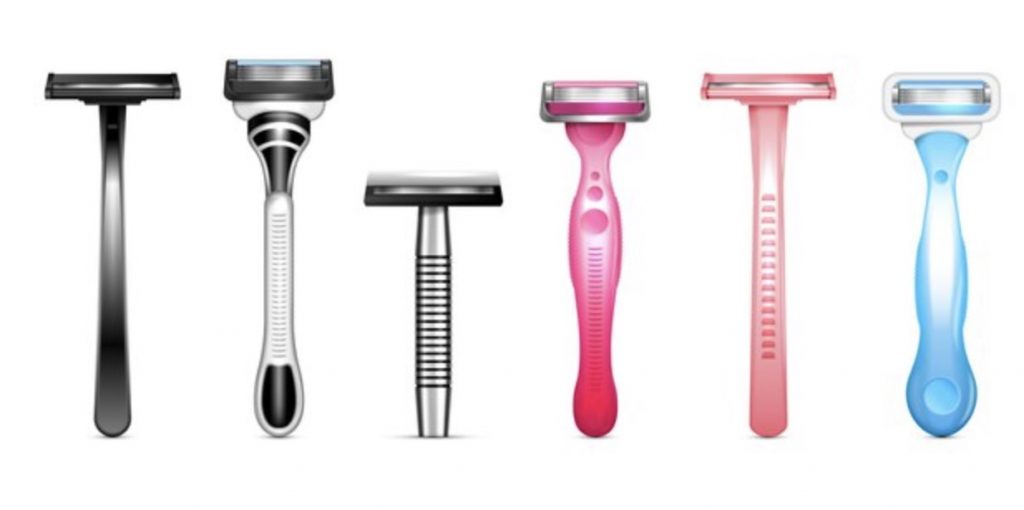While the world progresses towards breaking gender stereotypes, there’s one lingering question that boggles the minds of many – the enigma of Mens Vs Womens Razors. As we wade through the aisles of the supermarket, we spot a stark divergence in the color-coding of razors. The men’s section teems with an array of razors in darker hues, while the women’s section is splashed with pastel shades. This raises an intriguing question – is this disparity merely aesthetic, or is there a functional difference between the two? Let’s unravel this shaving paradox.
The Prolific Price Disparity
The first glaring difference between Mens Vs Womens Razors lies in their pricing. Women’s razors often come with a higher price tag compared to men’s razors from the same brand. This phenomenon, known as the ‘Pink Tax,’ has been a subject of debate for many years. However, whether the additional cost for women’s razors is justified or not is subjective and depends on the individual’s shaving needs.
The Tale Told By Colors
Indeed, the most conspicuous difference between Mens Vs Womens Razors is the color. Women’s razors typically sport feminine colors such as pink, purple, and other pastel tones. In contrast, men’s razors are usually designed in traditionally masculine shades like blue, black, or silver. However, the color of the razor has no bearing on its effectiveness.
Understanding The Razor Heads
The design of razor heads differs between men and women’s razors, taking into account the different body areas they are used on. Women’s razors feature a rounded head, designed to navigate smoothly around body contours like ankles and knees. Conversely, men’s razors possess a square head, better suited for the shape of the face. This aspect of the razor indeed impacts its performance.
Decoding The Blade Design
Interestingly, the blades on men’s and women’s razors are generally of the same quality. However, their arrangement differs. Men’s razors have their blades more closely packed together, designed for cutting through dense facial hair and giving a close shave. Women’s razors, on the other hand, do not require such an angle to cut through softer body hair. Moreover, the blades on women’s razors tend to get dull faster, as they are used over larger areas.
Grasping The Handle Shape
The handle shape varies between men’s and women’s razors. Women’s razors have a rounded handle that’s easy to grip from various angles, considering the need to change the position of the razor grip more often to reach different body parts. Men’s razors have a more linear handle, as they don’t require to be held in as many positions.
Analyzing The Handle Arc
The handle curvature or arc, too, is different for men’s and women’s razors. Women’s razors usually have a larger arc, enabling a clear view while shaving areas like legs or underarms. Men’s razors have a flatter shape, usually with zero arc to the handle, because the way you hold the razor while shaving your face while looking in the mirror doesn’t require it.
Lubrication: A Key Differentiator
Women’s razors usually come with built-in lubrication, while most men’s razors do not, or only have a small lubricating strip. The lubrication, in the form of bars of shave lotion or gel strips around the blades, helps prevent cuts when shaving around the contours of the ankles, knees, and other sensitive areas.
The Verdict: Which Razors Should You Opt For?
The differences between Mens Vs Womens Razors are primarily based on the different areas they are used on, and not the gender of the person using it. While men’s razors are designed for face shaving, women’s razors are designed for body shaving. However, there’s no concrete rule that women can’t use men’s razors or vice versa. The choice boils down to personal preference and comfort. Some may find that men’s razors aren’t as comfortable or effective for body shaving, while others may find women’s razors unable to manage dense facial hair.
In the end, the pivotal factor is to find a razor that provides a comfortable, smooth shave, irrespective of its gender specification. After all, shaving is a personal grooming routine, and the razor you choose should cater to your specific needs, be it a men’s razor, a women’s razor, or a unisex one.
The Future of Shaving: Unisex Razors
In recent years, niche brands have begun offering an alternative to the gendered razor paradigm: unisex razors. These razors aim to combine the best features of men’s and women’s razors, providing a versatile shaving tool that can be used by anyone, on any part of the body. This development signifies a step towards breaking down gender stereotypes in personal care products, bringing us a step closer to equality, even in our shaving routines.
Shaving Away The Stereotypes
The debate on Mens Vs Womens Razors is a reflection of the larger issue of gender stereotypes that pervade our society. The color-coding and marketing of razors based on gender are indicative of the deep-rooted gender norms that we adhere to, often subconsciously. By questioning these norms and making conscious choices, we can play a part in shaving away these stereotypes, one razor at a time.
In conclusion, the difference between men’s and women’s razors extends beyond aesthetics, with functional variations designed to cater to different shaving needs. However, the choice of razor should ultimately depend on personal comfort and effectiveness, regardless of the gender specification. After all, in the quest for a smooth and comfortable shave, the razor is only as good as the comfort it provides.







